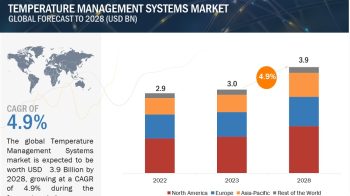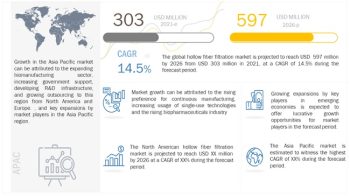
The patient handling equipment market is a critical segment within the healthcare industry, encompassing various devices designed to assist in the safe and efficient transfer, movement, and care of patients. This market is driven by the need to enhance patient safety, improve caregiver productivity, and ensure compliance with health and safety regulations. With an aging global population and increasing incidences of chronic diseases, the demand for patient handling equipment is poised to grow significantly over the coming years. This article delves into the market dynamics, focusing on patient transfer devices such as lifts and sliding sheets, and provides a global forecast up to 2027.
Patient Handling Equipment Market by Type (Patient Transfer Devices (Lifts, Sliding Sheets) – Global Forecasts to 2027
The global patient handling equipment market in terms of revenue was estimated to be worth $10.4 billion in 2022 and is poised to reach $14.0 billion by 2027, growing at a CAGR of 6.2%
Download a PDF Brochure: https://www.marketsandmarkets.com/pdfdownloadNew.asp?id=186358368
Market Overview
Patient handling equipment includes a range of devices and tools that aid in the movement and positioning of patients within healthcare facilities and home care settings. The primary types of patient handling equipment include:
- Patient Transfer Devices: These are designed to transfer patients from one place to another, such as from a bed to a wheelchair. Key devices in this category are lifts and sliding sheets.
- Mobility Aids: Devices like wheelchairs, walkers, and crutches that help patients move independently.
- Medical Beds: Specialized beds that provide comfort and support for patients, often featuring adjustable settings.
- Bathroom Safety Products: Includes shower chairs, commodes, and grab bars to ensure patient safety in the bathroom.
Among these, patient transfer devices, specifically lifts and sliding sheets, play a pivotal role in reducing the physical strain on caregivers and minimizing the risk of injuries to both patients and healthcare providers.
Patient Transfer Devices
Lifts
Lifts are mechanical devices that assist in lifting and transferring patients who are unable to move on their own. There are several types of lifts used in healthcare settings:
- Ceiling Lifts: Installed on the ceiling, these lifts provide a safe and efficient way to transfer patients. They are particularly useful in confined spaces where floor-based lifts may not be practical.
- Floor Lifts: Also known as mobile lifts, these devices are versatile and can be moved from room to room. They are commonly used in hospitals and home care environments.
- Sit-to-Stand Lifts: Designed for patients who have some mobility but require assistance in standing up from a seated position.
Sliding Sheets
Sliding sheets are low-friction fabrics used to reposition patients in bed or transfer them from one surface to another. These sheets reduce the effort required by caregivers and decrease the risk of skin injuries to patients. Sliding sheets come in various sizes and materials, catering to different patient needs and care settings.
Market Drivers
Several factors are propelling the growth of the patient handling equipment market:
Aging Population
The global aging population is a significant driver for the patient handling equipment market. As the elderly population increases, the prevalence of mobility-related issues and chronic conditions rises, leading to higher demand for patient handling solutions.
Rising Incidence of Chronic Diseases
Chronic diseases such as arthritis, cardiovascular diseases, and obesity often result in reduced mobility. Patients with these conditions require specialized equipment to ensure safe and effective handling, thereby boosting market growth.
Regulatory Requirements
Stringent regulations and guidelines aimed at ensuring patient and caregiver safety are encouraging healthcare facilities to adopt advanced patient handling equipment. Compliance with these regulations often necessitates the use of specific devices, further driving market demand.
Technological Advancements
Innovations in patient handling equipment, such as the development of more ergonomic and user-friendly devices, are enhancing the efficiency and safety of patient transfers. These advancements are making it easier for healthcare providers to adopt and integrate new equipment into their practices.
Market Challenges
Despite the promising growth prospects, the patient handling equipment market faces several challenges:
High Costs
The initial investment and maintenance costs associated with advanced patient handling equipment can be prohibitive, particularly for small healthcare facilities and home care providers. This cost factor can limit market penetration, especially in developing regions.
Training and Education
Proper training is essential for the effective and safe use of patient handling equipment. A lack of adequate training programs and educational resources can hinder the adoption of these devices, leading to potential misuse and accidents.
Limited Awareness
In many regions, there is still limited awareness about the benefits and availability of patient handling equipment. This lack of awareness can slow market growth, especially in underserved areas.
Regional Market Insights
North America
North America holds a significant share of the patient handling equipment market, driven by a well-established healthcare infrastructure, high awareness levels, and stringent safety regulations. The presence of key market players and ongoing technological advancements further support market growth in this region.
Europe
Europe is another major market for patient handling equipment, characterized by a robust healthcare system and favorable government policies. The aging population in countries like Germany, France, and the UK is a crucial factor contributing to market expansion.
Asia-Pacific
The Asia-Pacific region is expected to witness substantial growth in the patient handling equipment market during the forecast period. Rapidly developing healthcare infrastructure, increasing healthcare expenditure, and a growing aging population are key drivers in this region. However, cost constraints and limited awareness may pose challenges to market growth.
Latin America and Middle East & Africa
These regions are gradually adopting patient handling equipment, with growth primarily driven by improving healthcare facilities and increasing investments in the healthcare sector. However, economic constraints and limited access to advanced technologies can impede market development.
Conclusion
The patient handling equipment market is set to expand significantly in the coming years, driven by demographic shifts, rising chronic disease prevalence, and technological advancements. Patient transfer devices, including lifts and sliding sheets, will play a crucial role in this growth, enhancing patient safety and caregiver efficiency. As healthcare providers continue to recognize the importance of these devices, the market will witness increased adoption and innovation, paving the way for a safer and more efficient healthcare environment.


